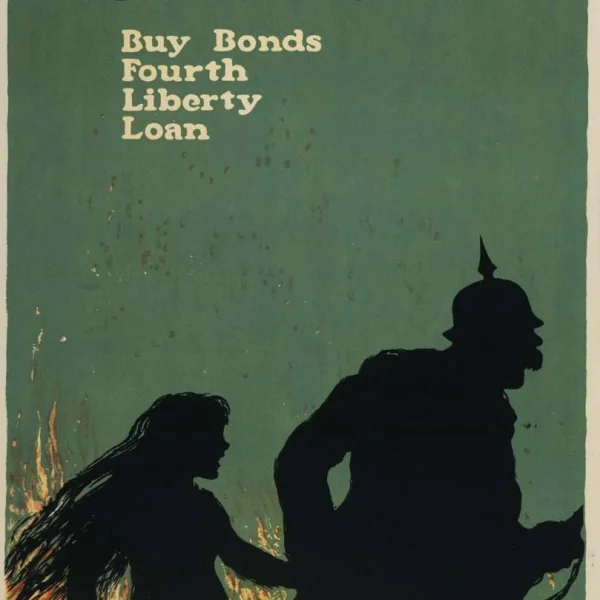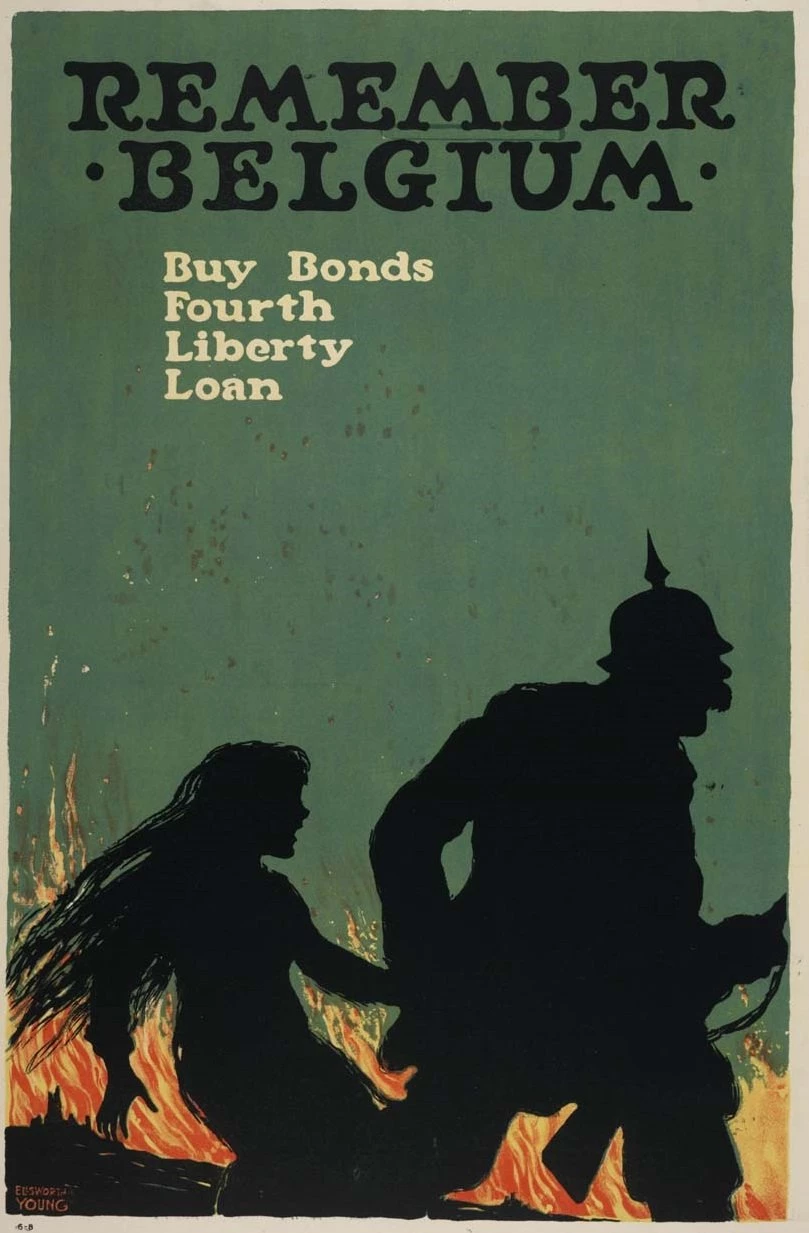The War to End All Wars, as the First World War was once called, brought out the best and the worst in Americans.
On the home front, “superpatriot” officials and mobs hounded and persecuted the nation’s (and Bloomington’s) large German-American population into surrendering the use of the German language in their newspapers, schools, churches and club meetings. In the Central Illinois countryside, Mennonites were taunted and humiliated (and occasionally hauled before federal investigators) for their pacifist beliefs.
Yet despite such ugliness, there was also an outpouring of support and a generosity of spirit when it came to hunger in German-occupied Belgium, privations in the “devastated districts” of France, and the destitution faced by widowed mothers and children from those two Western European nations. The Commission for Relief in Belgium was a rare humanitarian success story in an incomprehensibly appalling war that left nearly 20,000 British dead in one single day on the Somme battlefield. International relief efforts for Belgium were headed by Herbert Hoover, the future U.S. president.
In Bloomington, a French-Belgian Allied Relief Association spearheaded local charity efforts. Organized and managed by women, the success of this association spoke to the enormous, often-untapped potential of half the nation’s population constricted by patriarchal mores and laws. At this time women were rarely steered toward fulfilling careers in government, business or science. And when they were afforded such opportunities they faced barriers aplenty. Furthermore, women would not gain the constitutional right to vote until 1920, and not surprisingly, they were afforded little say when it came to the big public issues of the day. In the local press, married women—even those in leadership positions—were always identified, yoke-like, by their husband’s first name. It was “Mrs. G.B. Read,” for instance, and never Dottie Reed.
Bloomington-Normal was home to a sizable number (relative to the community’s population) of well-educated middle class and upper-middle class women. Much of their energy was channeled into an innumerable number of literary societies, history clubs, reading circles, charitable associations, spirited teas and the like. Unfortunately, these groups were racially and socioeconomically segregated with few if any women of color or those from working-class backgrounds. That said, there were African-American social, educational and charitable clubs and organizations, and they accomplished much good work independently of their vastly more privileged peers.
The driving force behind local French-Belgian relief efforts was the aforementioned Dottie Read, whose husband G.B. “Bert” Read was president and treasurer of Bloomington-based Portable Elevator Manufacturing Co. Well before the United States entered the war in April 1917, Dottie took it upon herself to visit humanitarian relief offices in Chicago in preparation for doing much the same in Bloomington. Her first major project was making pajamas for French soldiers in 1916.
In the fall of the following year, Read brought together a group of women to make clothing for civilians in France and elsewhere battered by the war. Two rooms in her East Jefferson Street residence were repurposed for such work. By October 1917 Read and her sewing circle had made 45 complete children’s outfits and hundreds of other garments for shipment overseas.
The French-Belgian Allied Relief Association, established around this time and headed by Read, grew out of these early efforts (It’s always nice to be reminded that one individual can indeed make a difference!) The association maintained office and work space in downtown Bloomington. “Church aid societies, clubs, lodges, leagues, thimble societies, etc.” all scheduled work time in this space to sort, measure, cut, sew and pack everything from women’s dresses to baby bootees. Other care package items, such as shoes and soap, were donated to, or purchased by, the association.
French-Belgian relief fundraisers included a garden party at Bloomington Country Club, and a two-day “lawn fete” and dance at “The Oaks,” the mid-19th century mansion on the 300 block of East Grove Street.
A parallel relief program, the Fatherless Children of France Committee, was led by Edith Davis, wife of David Davis II, grandson of U.S. Supreme Court Justice David Davis. Area residents were asked to adopt French or Belgian “orphans” (though many of these children still had mothers). Adoption in this case meant financial support or sponsorship of a child for one year at a cost of $36.50, the equivalent of nearly $600 today, adjusted for inflation.
“Liberty cannot survive unless France survives; France cannot survive unless her children are saved,” declared The Pantagraph in its spirited defense of the child sponsorship program.
On July 13, 1918, local French-Belgian relief events included a French marketplace and sidewalk cafe (a la “Gay Paree”) on the west side of the courthouse square in downtown Bloomington. That same evening there was a “pavement dance” on the 1200 block of East Jefferson Street. Booths with refreshments were located along residential driveways, and lights were strung down the middle of the street. The French market netted $582 for relief efforts and the pavement dance an impressive $1,070.52.
On Oct. 1, a war relief shop was opened in the Irvin Theater building on East Jefferson Street. The gift shop featured “unusually dainty and pretty handmade fancy work” from local women, including greeting cards, handkerchiefs, baby clothes and hand-painted luncheon sets.
Such fundraising work did not end with the silencing of guns that came with the November 11, 1918 armistice. Charitable activities continued through the winter of 1918-1919 and into the spring. In January 1919, for example, the French-Belgian aid association spent $1,500 for blankets.
It seemed as if there was always someone or some group working on relief. The delightfully named As You Like It Club, to cite one example, held a lunch in late January 1919 “tying comforts” (securing the back of a quilt to the top with yarn) destined for Europe.
Although the French and Belgian-Allied Relief Association formally closed up shop on Mar. 28, 1919, donations continued to arrive. In early April, the relief committee in Cropsey, a tiny community in the northeast corner of McLean County, concluded 14 months of work, highlights of which included sponsorship of an orphan and the making and gathering of some 1,400 articles of clothing.
All told, McLean County residents sent some 60,000 garments overseas. The county also sponsored more than 465 orphans, exceeding its quota by nearly 180. When it came to World War I relief, McLean County outpaced all but Cook among the state’s 102 counties “in the volume of shipments and in other active ities.”
For her part in the terrible war, local relief organizer Dottie Read received a medal of recognition from Princess Henriette of Belgium.

